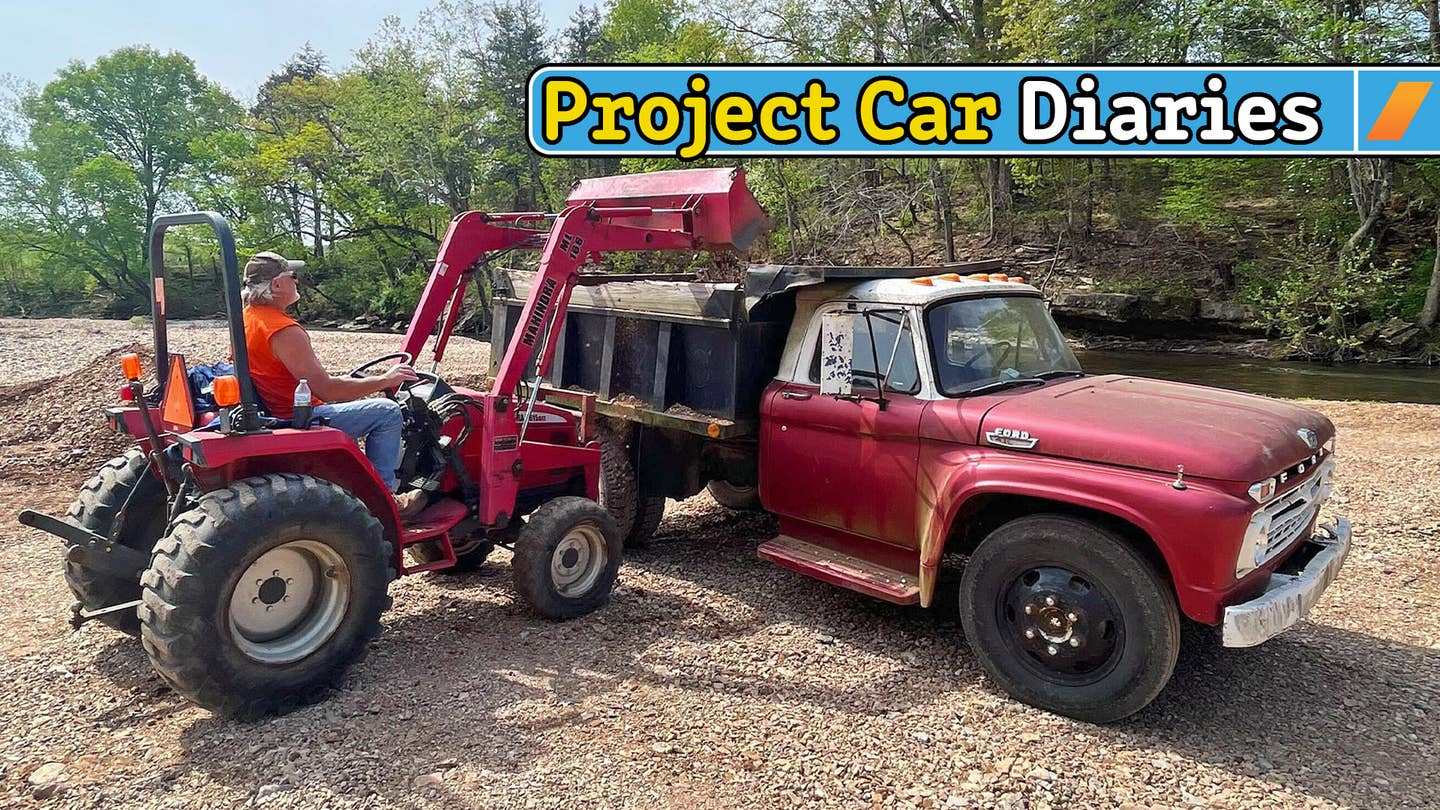My 1966 Ford Dump Truck Is Still Sputtering Along, but I Want It To Sing
I’ve made a laundry list of repairs to the old F600, but when it comes to fuel problems, one leads to another.

I would not call my 1966 Ford dump truck unreliable. I love it too much to say that. What I will say is that in my four years of ownership, I've never quite solved its fuel problems. Maybe, just maybe, you can help me whip it into shape.
It's been a good while since I've written about the mighty F600, so pull up a chair while I recap my adventures with the Blue Oval workhorse that's more than twice my age.
I acquired the single-axle machine in April of 2020. Spring is always busy for our family as we own a campground in the Missouri Ozarks. It's situated where two waterways meet—Big Sugar Creek, which flows into Elk River, and Mike's Creek, a smaller body that's spring-fed. Flooding is a regular problem we face as it destroys campsites, uproots trees, and even rips apart our low-water bridge. We were tired of moving gravel across the 15-acre property one tractor bucket at a time, so when this rig was parked less than five miles up the road with a for-sale sign in the windshield, we went for it.
With an initial purchase price of $3,000, the old Ford has more than earned its keep. We're now able to move exponentially more rock and dirt than before in far less time. A while back, it moved more than 500 tons of earth in just a month—that's what this thing is capable of when it's working at its best. When it's not, though, it becomes an extremely heavy and, at times, extremely frustrating yard ornament.
If I had to pick, I would much rather it break down in my yard than on the road. I've had that happen plenty of times, as well as once at the quarry after they loaded me with 5.5 tons of rock. The exact issues are rarely identical, but they're always related: The fuel system sucks.
The feeling was familiar, then, when I went to start it up in January but all it could do was crank and spit gas out of the carburetor. We've replaced every piece of fuel line at this point, from the in-cab fuel tank forward. The previous owner swapped it from a mechanical fuel pump to an electric one, which I've swapped out two or three times now. All that's left is the ancient single-barrel—more on that in a second.
I called up my mechanic friend Greg, who we keep on retainer, more or less. It might not be a cool thing for a car writer to admit, but I'm a horrible wrench. Since a running dump truck is a necessity around here and our time is limited with two kiddos plus another on the way, I chose to phone it in. Chastise me if you want—I can take it.
The first logical step was replacing the spark plugs. They were last changed a couple of years back when we swapped it over to a Chevy-style HEI electronic ignition. As you can see, they were in dire need. Look at how badly they were fouled. Just gross.
Oh, and did I mention this thing has a 300-cubic-inch inline-six? It's original to the truck and features a sought-after forged steel crank. I learned that while decoding the VIN and poring over original sales literature that Ford sent me a few years back.
Greg also removed the Carter single-barrel carb, cleaned it up, and reinstalled it. That was enough to get the truck running so we could use it this past weekend. We hauled somewhere between 20 and 25 loads of creek gravel with it, but the whole time, it ran poorly. It's tricky to start and it's still spewing fuel up through the carb, covering the air cleaner with gas. Then, once it does start, it won't idle for more than 20-30 seconds. The carb is audibly sucking air the whole time. It's a real pain.
That's how I've landed in the spot I'm at now. I spent the first part of my Monday looking around for replacement carburetor suggestions and from what I've found, an OE-style single-barrel is my best bet since I'm only looking for reliability. The intake manifold seems to be the limiting factor for folks who want more performance. As for me, I just want it to run correctly. I'm happy with the original 150 horsepower and 272 lb-ft of torque (or what's left of it) because I rarely exceed, like, 8 mph. The HI/LO split rear-end does a great job of multiplying what little power the engine makes thanks to axle ratios of 5.83 or 8.11, depending on the position of the gearshift-mounted switch.
I'm parking the dump truck until I replace the carb to avoid more problems. Hopefully, that'll fix it and I'll be back to hauling rock soon. In the meantime, I'm happy it's parked at my house and not on some dirt road or two-lane highway. Keeping this rig around home was one of the better decisions I've made.
But no, I would not call it unreliable! I just need to figure out how get it to combust its food correctly. Anybody got tips?
Got a tip or question for the author? Contact them directly: caleb@thedrive.com
